
How to Use Full Bridge Rectifier: Examples, Pinouts, and Specs
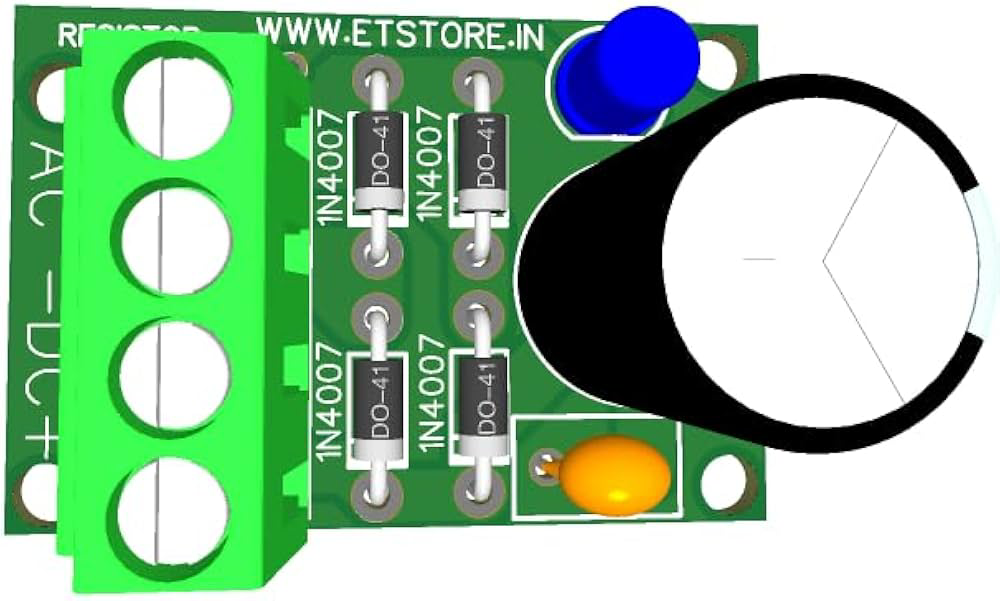
 Design with Full Bridge Rectifier in Cirkit Designer
Design with Full Bridge Rectifier in Cirkit DesignerIntroduction
A full bridge rectifier is an electrical circuit consisting of four diodes arranged in a bridge configuration to convert alternating current (AC) input into direct current (DC) output. This component is essential in power supply units, allowing AC from the mains to be converted into a usable DC form for electronic devices. Common applications include power adapters, battery charging circuits, and DC motor drives.
Explore Projects Built with Full Bridge Rectifier
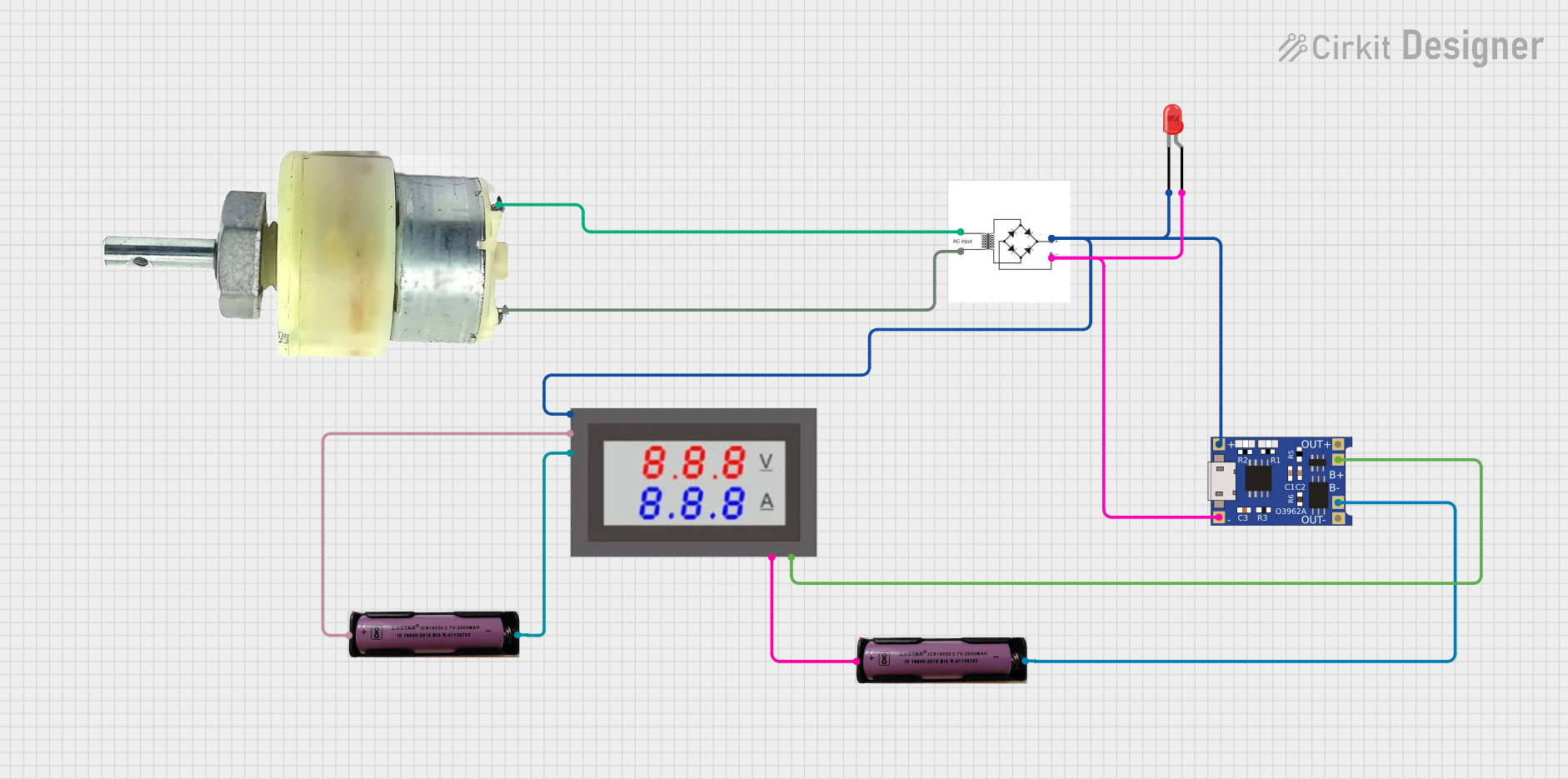
 Open Project in Cirkit Designer
Open Project in Cirkit Designer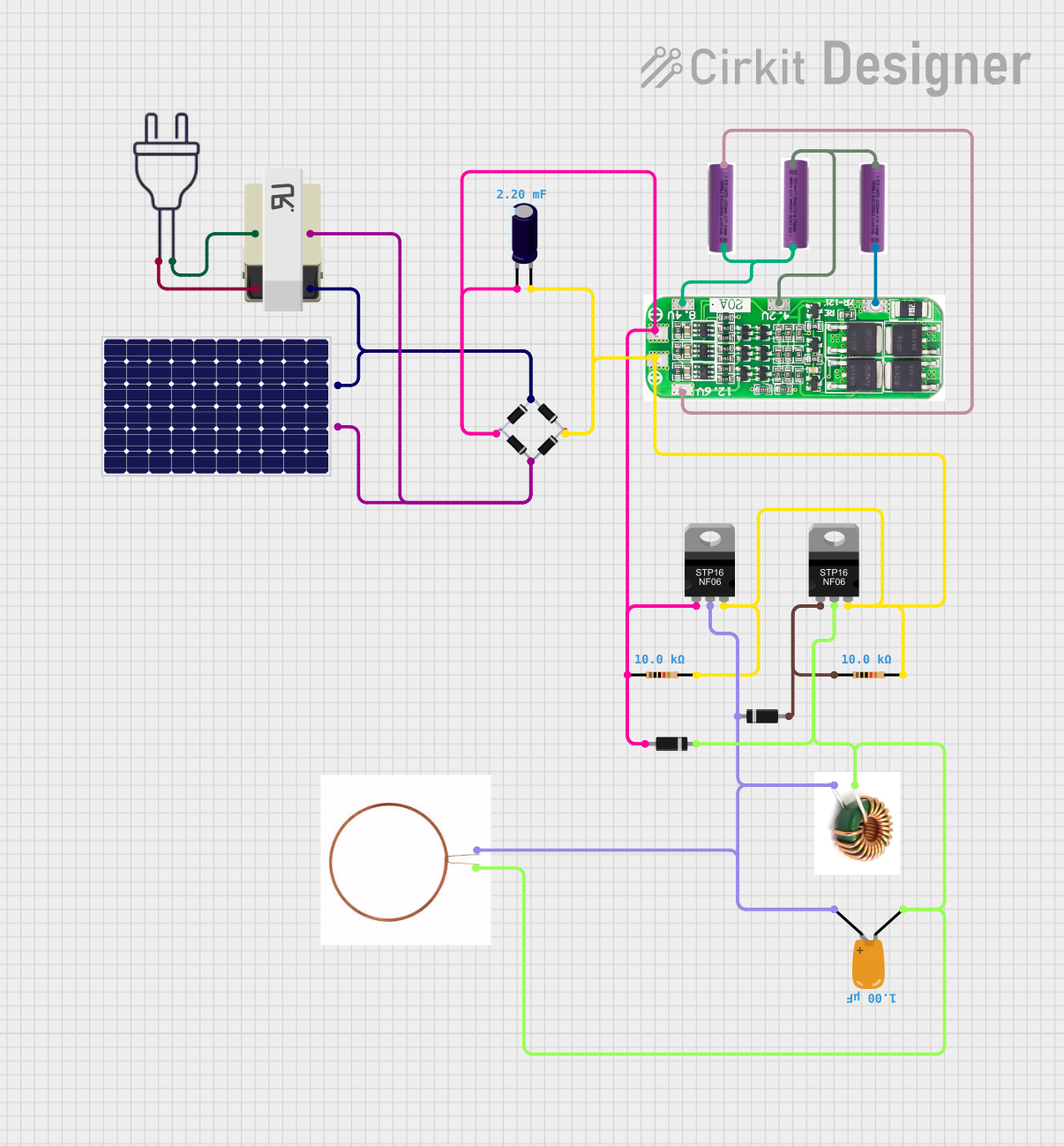
 Open Project in Cirkit Designer
Open Project in Cirkit Designer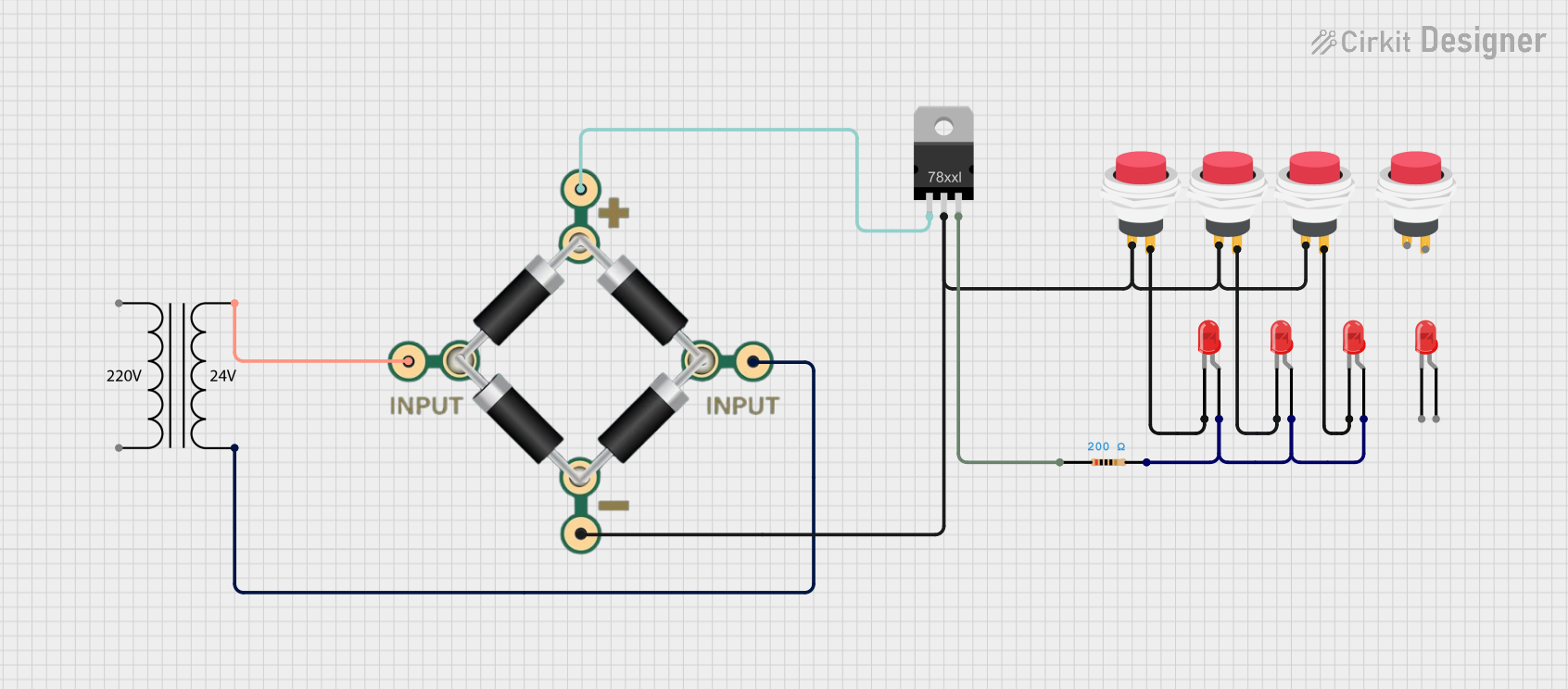
 Open Project in Cirkit Designer
Open Project in Cirkit Designer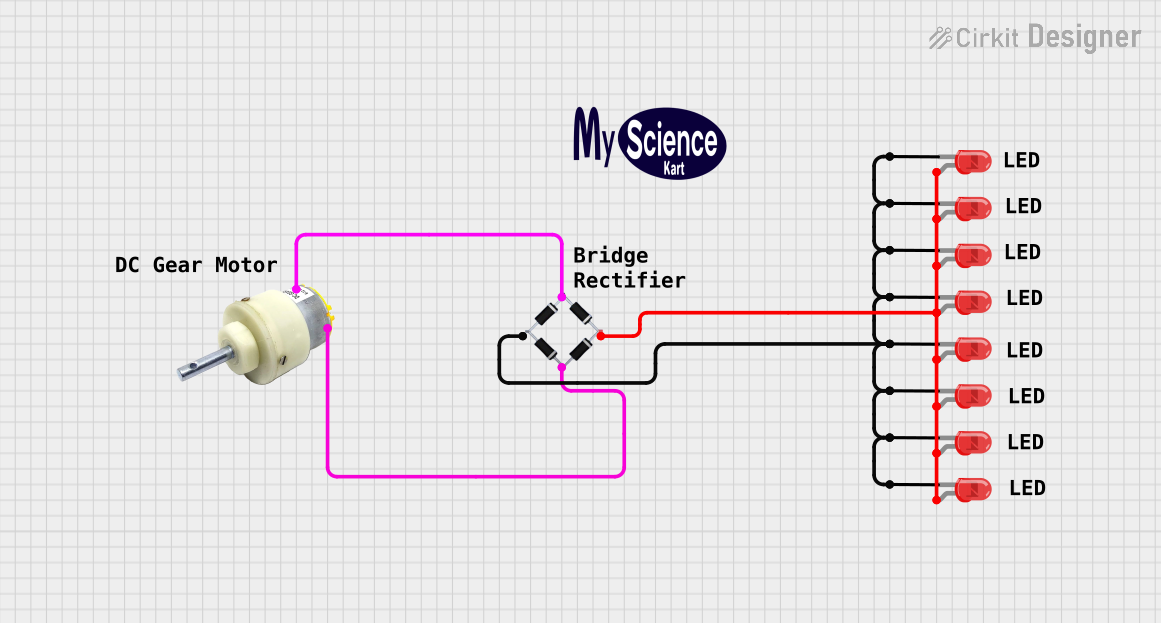
 Open Project in Cirkit Designer
Open Project in Cirkit DesignerExplore Projects Built with Full Bridge Rectifier

 Open Project in Cirkit Designer
Open Project in Cirkit Designer
 Open Project in Cirkit Designer
Open Project in Cirkit Designer
 Open Project in Cirkit Designer
Open Project in Cirkit Designer
 Open Project in Cirkit Designer
Open Project in Cirkit DesignerTechnical Specifications
Key Technical Details
| Parameter | Value |
|---|---|
| Input Voltage | 100V - 240V AC |
| Output Voltage | Varies based on input and load |
| Maximum Current | 1A - 50A (depending on model) |
| Diode Type | Silicon |
| Efficiency | ~80% - 90% |
| Temperature Range | -40°C to 150°C |
Pin Configuration and Descriptions
| Pin Number | Pin Name | Description |
|---|---|---|
| 1 | AC1 | AC input terminal 1 |
| 2 | AC2 | AC input terminal 2 |
| 3 | DC+ | Positive DC output terminal |
| 4 | DC- | Negative DC output terminal |
Usage Instructions
How to Use the Component in a Circuit
Connect the AC Input:
- Connect the AC1 and AC2 pins to the AC source. Ensure the voltage rating of the rectifier matches the AC source.
Connect the DC Output:
- Connect the DC+ and DC- pins to the load or the next stage of your circuit. The DC+ pin provides the positive voltage, and the DC- pin provides the ground.
Filtering:
- To smooth the rectified output, connect a capacitor across the DC+ and DC- terminals. The value of the capacitor depends on the load and desired ripple voltage.
Important Considerations and Best Practices
Heat Dissipation:
- Full bridge rectifiers can generate significant heat. Ensure adequate cooling, such as heat sinks or ventilation, especially for high-current applications.
Voltage Rating:
- Always check the voltage rating of the rectifier to ensure it can handle the input AC voltage.
Current Rating:
- Ensure the rectifier's current rating exceeds the maximum current draw of your load to prevent damage.
Polarity:
- Double-check the polarity of the DC output before connecting to sensitive components.
Troubleshooting and FAQs
Common Issues and Solutions
No Output Voltage:
- Solution: Check the AC input connections and ensure the AC source is functioning. Verify the diodes are not damaged.
Excessive Ripple in Output:
- Solution: Increase the value of the smoothing capacitor. Ensure the capacitor is rated for the correct voltage.
Overheating:
- Solution: Improve cooling with heat sinks or fans. Ensure the rectifier is not overloaded beyond its current rating.
Output Voltage Too Low:
- Solution: Verify the input AC voltage is within the specified range. Check for any significant voltage drops across connections.
FAQs
Q1: Can I use a full bridge rectifier with a DC input?
- A1: No, a full bridge rectifier is designed for AC input. Using a DC input will not produce the desired rectification.
Q2: What type of capacitor should I use for filtering?
- A2: Use an electrolytic capacitor with a voltage rating higher than the peak DC output voltage. The capacitance value depends on the load and desired ripple voltage.
Q3: Can I use a full bridge rectifier with an Arduino UNO?
- A3: Yes, you can use a full bridge rectifier to convert AC to DC, which can then be regulated to power the Arduino UNO. However, ensure the output voltage is within the acceptable range for the Arduino's power input.
// Example code to read the rectified voltage using Arduino UNO
const int analogPin = A0; // Pin connected to the rectified DC output
int sensorValue = 0; // Variable to store the value from the sensor
void setup() {
Serial.begin(9600); // Initialize serial communication
}
void loop() {
sensorValue = analogRead(analogPin); // Read the input on analog pin
float voltage = sensorValue * (5.0 / 1023.0); // Convert the analog reading
// to voltage
Serial.print("Rectified Voltage: ");
Serial.println(voltage); // Print the voltage to the Serial Monitor
delay(1000); // Wait for a second before the next reading
}
This documentation provides a comprehensive guide to understanding, using, and troubleshooting a full bridge rectifier. Whether you are a beginner or an experienced user, these details will help you effectively integrate this component into your electronic projects.